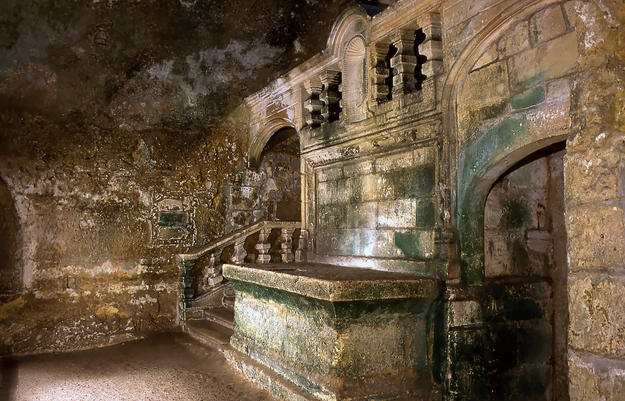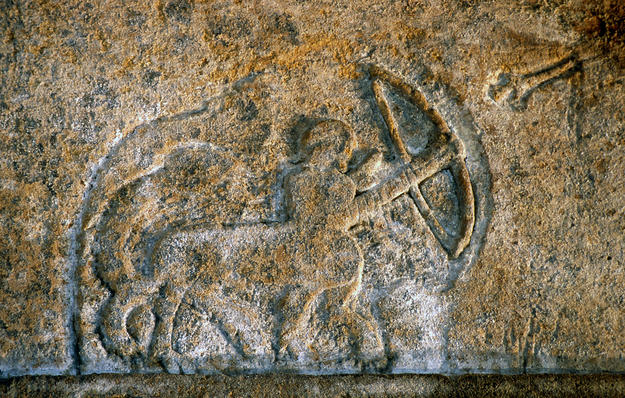Saint-Emilion Monolithic Church
1996 World Monuments Watch
Rising dramatically against a rocky backdrop, Saint-Emilion Monolithic Church, constructed in the early twelfth century, is partly subterranean. Its three naves, with a small catacomb beneath, were dug into a rocky hillside. This region of southern France drew attention in the eighth century when Emilion, a Breton monk, fled to escape persecution by the Benedictine Order. Emillon adopted an eremitic existence, living in a cave, was said to perform miracles, and attracted a following of monks. The region became known as Saint-Emilion. It acquired wealth and prominence due to wine production and to its strategic position along a pilgrimage route to Santiago de Compostela. A number of religious monuments were established, with Saint-Emilion Monolithic Church, being the most well-known. The church’s 53-meter-high bell-tower was a notable landmark, though by the late twentieth century the 3,000 ton weight of the tower shifted, making it susceptible to collapse.
A meeting of international experts was convened by WMF
In 1996, World Monuments Fund placed Saint-Emilion Monolithic Church on the Watch because of the severe structural problems, exacerbated by constant water infiltration threatening this architecturally and culturally significant site. Cement columns had been erected to supplement the church’s pillars and reinforce the bell tower, but this solution was neither designed to be permanent nor aesthetically desirable. To begin, WMF undertook a technical study that identified and analyzed the specific problems at Saint-Emilion. A meeting of international experts was convened by WMF in 1998. Geologists, architects, and engineers from universities across Europe produced recommendations for conservation strategies that were implemented, with funding from the local and national governments. The church’s foundations were strengthened through the insertion of tensile bands into the pillars. A decade after inclusion on the Watch, Saint-Emilion Monolithic Church was stabilized, restored, and opened to the public. When Eleanor of Aquitaine married Henry Plantagenet in 1152 (soon to become Henry II of England), Saint-Emilion became a province ruled by the Angevin king of England. The territory changed hands several times in the following centuries, and became a permanent part of the French kingdom in 1453. Its historic landscape includes vineyards, fine architecture, and many churches and monasteries built from limestone quarried locally. The cultural landscape of Saint-Emilion, including its most famous church, was added to the UNESCO World Heritage List in 1999.


